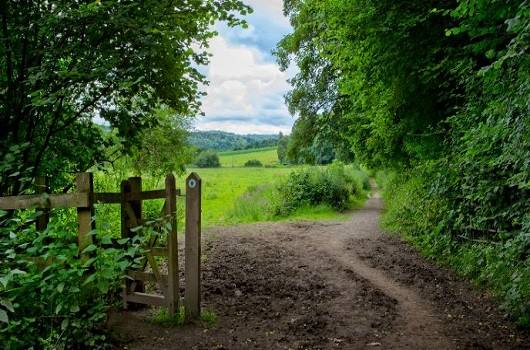
What is Ash Dieback?
Ash Dieback (ADB) is considered the most significant disease to affect the United Kingdom's tree population since Dutch Elm Disease in the 1960s and 1970s. It is expected to cause the decline and death of over 90% of ash trees in England. Sadly, the disease has advanced considerably due to the extreme climatic conditions we have experienced in the last few years.
Ash trees are the third most common native tree in the UK, found in woodlands and other landscape settings. ADB is caused by a non-native fungus called Hymenoscyphus fraxineus that weakens a tree's structure. Infected trees often see their leaves and branches dying higher up the tree, with the tree becoming weak and unpredictable, often becoming dangerous long before they die.
Notice of Ash dieback works on Surrey's Countryside Estate
Following a successful 2024 Ash dieback programme, further surveys are being undertaken across Surrey’s countryside estate and Ash dieback works will begin in autumn 2025, following the conclusion of bird nesting season.
Updates will continue to be posted on our Ash dieback webpage and via our Explore Surrey social media channels and our 'Countryside Matters' e-newsletter.
Sign up to our countryside matters newsletter
More from countryside news
- Discover the new ‘super’ National Nature Reserve in Surrey
- New Surrey Connect shuttle bus service
- Planting our way to a greener future
- Do You See Me? A Trail of Possibility in the Surrey Countryside
- Exploring your way through summer
- Summer Reading Challenge to launch at Newlands Corner
- Countryside Apprenticeships
- Dog walking etiquette in Surrey’s countryside
- Filming in Surrey's Countryside
- The story of Surrey’s ancient trees
- Iconic Box Hill steps refurbished to encourage sustainable access
- Tree planting season success
- Sign up to support tree planting
- 40 years of countryside management
- GPS grazing collars for moo-ving Surrey cows
- A day in the life of a Countryside Ranger Apprentice
- A day in the life of a Tree Planting Project Support Officer
- Cattle arrive at Tice's Meadow
- A day in the life of A Countryside Estate Officer
